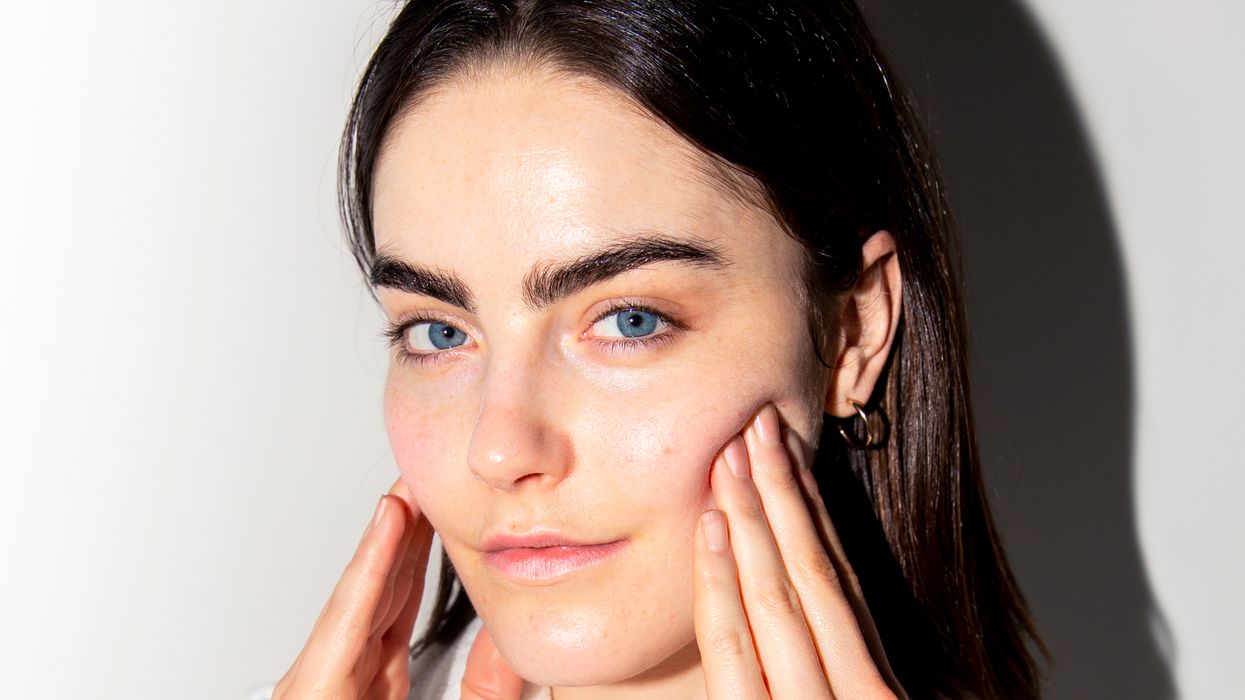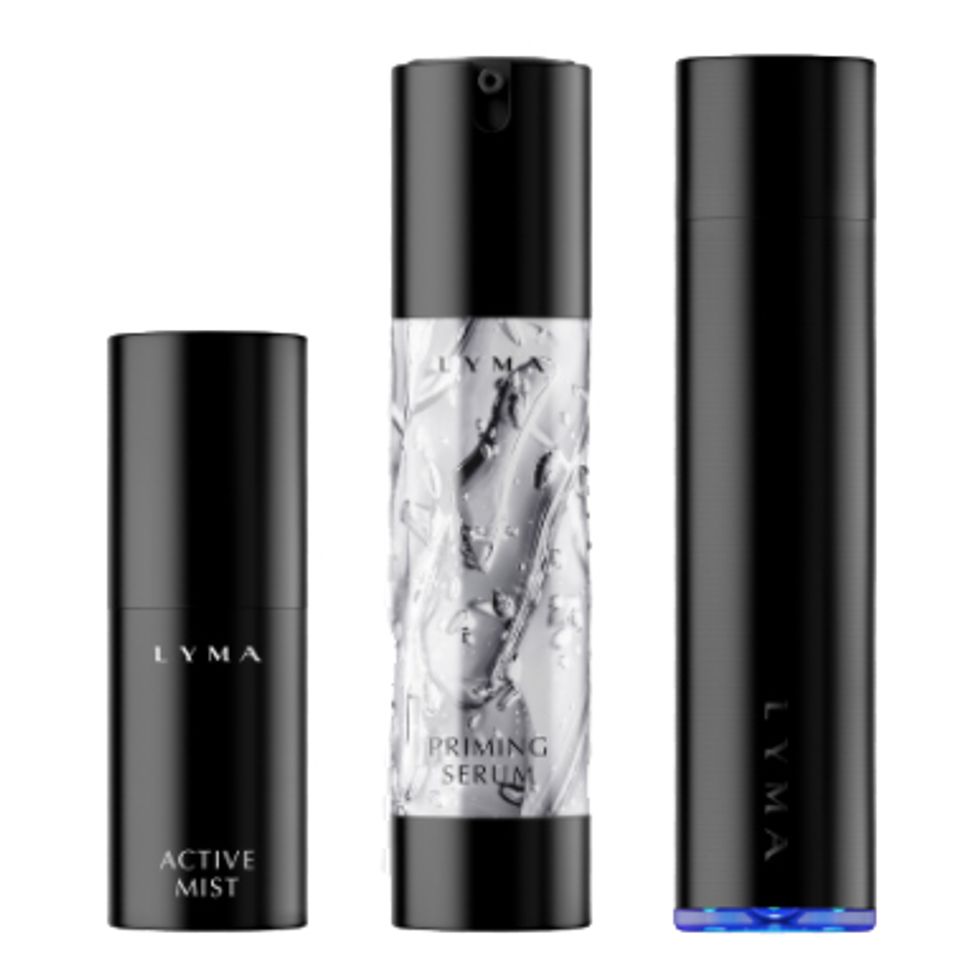Skin
I Tried an At-Home Laser Treatment That Costs More Than My Rent
Here’s what happened to my skin—and whether or not it was worth the price tag.

23 September, 2020
10 November, 2021
As much as I love beauty and skin care, I’ve never undergone a laser treatment before. Now, I am still quite young, so I have been telling myself that it was all right for me to bypass this sort of treatment until the big two-five comes around and my collagen levels start to drop. But now I’m starting to see that my previous reasoning doesn’t really make sense.
In-office laser treatments work by damaging the top layers of the skin with minimal heat. This prompts the skin to naturally repair itself and shed the top layer of dead skin cells, allowing clearer, brighter skin to shine. The effects of the laser also include minimizing fine lines and wrinkles, hyperpigmentation in the skin, and even acne. It’s the latter two that I deal with currently.
Sitting at home for months, and without a single professional facial, no less, I started to notice that my skin was changing. I broke out significantly more than usual (thanks, stress and maskne), and my skin looked sullen, puffy, and almost grey after cleansing. It was almost as if no combination of acids or retinoids could help me. After realizing that LYMA would be releasing their at-home laser this month, I jumped at the opportunity to try it out. I felt I needed something to rid me of my skin care worries and hoped that this tool might be my savior. Of course, the hefty retail price of $2,500 also piqued my interest—why exactly is this so damn expensive?
In-office laser treatments work by damaging the top layers of the skin with minimal heat. This prompts the skin to naturally repair itself and shed the top layer of dead skin cells, allowing clearer, brighter skin to shine. The effects of the laser also include minimizing fine lines and wrinkles, hyperpigmentation in the skin, and even acne. It’s the latter two that I deal with currently.
Sitting at home for months, and without a single professional facial, no less, I started to notice that my skin was changing. I broke out significantly more than usual (thanks, stress and maskne), and my skin looked sullen, puffy, and almost grey after cleansing. It was almost as if no combination of acids or retinoids could help me. After realizing that LYMA would be releasing their at-home laser this month, I jumped at the opportunity to try it out. I felt I needed something to rid me of my skin care worries and hoped that this tool might be my savior. Of course, the hefty retail price of $2,500 also piqued my interest—why exactly is this so damn expensive?
LYMA founder Lucy Goff explains, “The true strength of the LYMA laser is the fact that it has a 500-milliwatt laser inside,” which is far more intense than other at-home lasers on the market, which range between five and 20 milliwatts in power. In fact, it can actually burn a hole through a credit card. Powerful stuff. The device contains two internal diffused lenses that disperse the laser 25,000 times over a three-centimeter area, meaning that you still get the benefits of the laser without burning your skin. Also, this controlled dispersion causes beams of light to shoot straight into the skin up to eight millimeters deep without ever refracting on the way (the way some LED masks tend to do).
Being that this is such a high-powered device, I was frankly quite worried that my first laser treatment (might I add, without the supervision of a professional) might be painful. Well, my skin and I are delighted to report that this laser is absolutely pain-free. As Goff explains, “The laser doesn’t work off of a stress-damage response,” meaning that unlike other lasers on the market, it does not work by damaging layers of the skin. Where damage ceases to exist, so does pain—at least in the case of lasers. The non-damaging nature of this laser is crucial to point out—many in-office lasers are not safe to use for darker skin tones due to their destructive nature. Since this office stimulates collagen production with absolutely no harm to the skin’s cells, this laser is safe to use on all skin tones.
So how exactly does it work? The laser was first created to live in the medical world for patients who were in need of cartilage and tendon regeneration. It uses light to encourage a natural bio-stimulation, which is a fancy way of saying that it activates our bodies’ cells to repair themselves. As far as our epidermis is concerned, the LYMA laser stimulates the skin all the way to the bottommost layer to produce collagen, which generates new skin cells (along with other connective tissue like elastin). That is why people like Goff have seen significant improvement in the skin on their knees, around their eyes, and even their cesarean scars.
Now, no one can simply waltz into their dermatologist’s office at the end of the day for a quick laser treatment before going home. So how often should we use a device that is, conveniently, already at home? I use it every. single. day. Given its regenerative nature, this laser is safe to use all day, every day, without ever harming the skin. Does that mean that I am currently writing this story with one hand while lasering my face with the other? Absolutely not. I use it for 15 minutes after I apply my moisturizer and before I use my SPF in the morning, and then after applying my lotions and potions at night as I watch a movie. Goff recommends starting the laser treatment twice a day for the first three months for the best results. After this time, a person can use the device a few times a week for maintenance, or as often as they need.
Being that this is such a high-powered device, I was frankly quite worried that my first laser treatment (might I add, without the supervision of a professional) might be painful. Well, my skin and I are delighted to report that this laser is absolutely pain-free. As Goff explains, “The laser doesn’t work off of a stress-damage response,” meaning that unlike other lasers on the market, it does not work by damaging layers of the skin. Where damage ceases to exist, so does pain—at least in the case of lasers. The non-damaging nature of this laser is crucial to point out—many in-office lasers are not safe to use for darker skin tones due to their destructive nature. Since this office stimulates collagen production with absolutely no harm to the skin’s cells, this laser is safe to use on all skin tones.
So how exactly does it work? The laser was first created to live in the medical world for patients who were in need of cartilage and tendon regeneration. It uses light to encourage a natural bio-stimulation, which is a fancy way of saying that it activates our bodies’ cells to repair themselves. As far as our epidermis is concerned, the LYMA laser stimulates the skin all the way to the bottommost layer to produce collagen, which generates new skin cells (along with other connective tissue like elastin). That is why people like Goff have seen significant improvement in the skin on their knees, around their eyes, and even their cesarean scars.
Now, no one can simply waltz into their dermatologist’s office at the end of the day for a quick laser treatment before going home. So how often should we use a device that is, conveniently, already at home? I use it every. single. day. Given its regenerative nature, this laser is safe to use all day, every day, without ever harming the skin. Does that mean that I am currently writing this story with one hand while lasering my face with the other? Absolutely not. I use it for 15 minutes after I apply my moisturizer and before I use my SPF in the morning, and then after applying my lotions and potions at night as I watch a movie. Goff recommends starting the laser treatment twice a day for the first three months for the best results. After this time, a person can use the device a few times a week for maintenance, or as often as they need.
 Photo: Isabella Sarlija
Photo: Isabella SarlijaMy results after one month have been excellent. My skin now glows without the help of any brightening or hydrating skin-care products. I’ve also seen a significant reduction in breakouts, blackheads, and hyperpigmentation, plus my skin is far less puffy. I believe I can credit that to the way I glide the tool over my face, which is similar to a lymphatic drainage massage. My Meditteranean pores are also far less noticeable, a welcome bonus.
Goff explains that the tool diminishes hyperpigmentation in the skin after three months of usage, so although I do still see some old acne scars on my cheeks, I must also remind myself that I am only a third of the way to the finish line.
Now for the million-dollar (or perhaps the 2,500-dollar) question: Is this exorbitantly priced tool worth the money? In short, yes. Think about it: This is a tool that can be used every day for ten years. That is, this tool will last for 3,650 days, which—if you break it down to cost per use—is little more than 50 cents per day. That’s less than what most people pay for an oat-milk matcha latte every morning. Much like any other investment, it may hurt your wallet at first, but it will surely pay off in the long run, and your skin will certainly thank you for it.
Want more stories like this?
Cryo Tools Are Your Secret Weapon Against Puffiness
Dermatologist’s Best Advice for Tackling Rosacea at Home
8 Anti-aging Bakuchiol Products Your Sensitive Skin Will Love
Goff explains that the tool diminishes hyperpigmentation in the skin after three months of usage, so although I do still see some old acne scars on my cheeks, I must also remind myself that I am only a third of the way to the finish line.
Now for the million-dollar (or perhaps the 2,500-dollar) question: Is this exorbitantly priced tool worth the money? In short, yes. Think about it: This is a tool that can be used every day for ten years. That is, this tool will last for 3,650 days, which—if you break it down to cost per use—is little more than 50 cents per day. That’s less than what most people pay for an oat-milk matcha latte every morning. Much like any other investment, it may hurt your wallet at first, but it will surely pay off in the long run, and your skin will certainly thank you for it.
Want more stories like this?
Cryo Tools Are Your Secret Weapon Against Puffiness
Dermatologist’s Best Advice for Tackling Rosacea at Home
8 Anti-aging Bakuchiol Products Your Sensitive Skin Will Love





